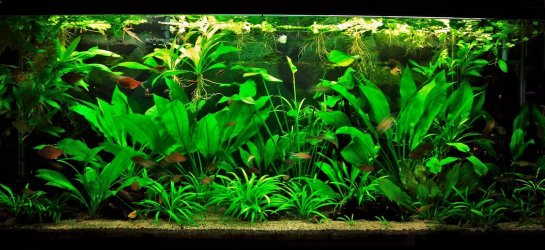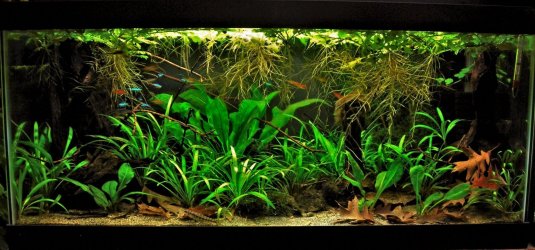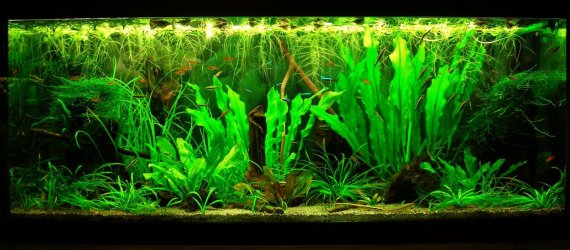The plants are there for the benefit of the fish, so this is a fish tank.
Thank you for the explanation, I appreciate it and it makes sense to me.
I will focus on the light to try to address the algae issue. I have Salvinia floating on top and reducing the light to the aquarium. I am also using a programmable controller for the led lights and I have the possibility to have different intervals with different intensities. Does reducing the intensity help, or should I focus on reducing the total period of light?
There are three aspects to light here. Intensity, spectrum and duration. Intensity must be sufficient to drive photosynthesis, and this level varies depending upon plant species. Slow-growing plants need less intense light than fast-growing plants. Spectrum has to provide high red (esp) and blue to drive photosynthesis; adding green to this does improve plant growth. Duration we can twig, but we must remember that duration cannot make up for intensity.
The period of highest intensity, the "day" period, must be consistent. This is primarily for the fish. The so-called "siesta" approach where the brightest light is on for say 4 hours, followed by 2 hours off, then another 3 or 4 hours may thwart algae (this is a CO2-related issue) but it plays havoc with the circadian rhythm of fish. There must also be a period of several hours of total and complete darkness. The periods between these two, dawn and dusk, can be any length but keep in mind that if there is tank lighting (dim) during these periods, algae can take advantage.
When I was battling black brush algae some year ago, I did a lot of experimenting with duration and fertilizer. The light intensity was fixed, so I worked with that. I reduced the duration an hour at a time until it got down to 7 hours with no more algae problems. But for two summers I noticed the black brush algae increasing, and it occurred to me that this was simply due to the increased brightness and duration of daylight entering the room in summer; as it was a dedicated fish room, blocking the windows completely was an option, and it worked. For the subsequent five years, no algae problems at all. The lesson here is that it doesn't take much to throw the balance out.
The photos below show that good plant growth is possible without adding any CO2, and with moderate light, at 7-8 hours a day. The light intensity was the highest I intended going, for the sake of the fish, so everything else took this as a starting point. And I firmly believe in the benefit of floating plants. I cannot grow red-leaf plants because the light is insufficient; I tried some, then moved on to other plants when they failed.




